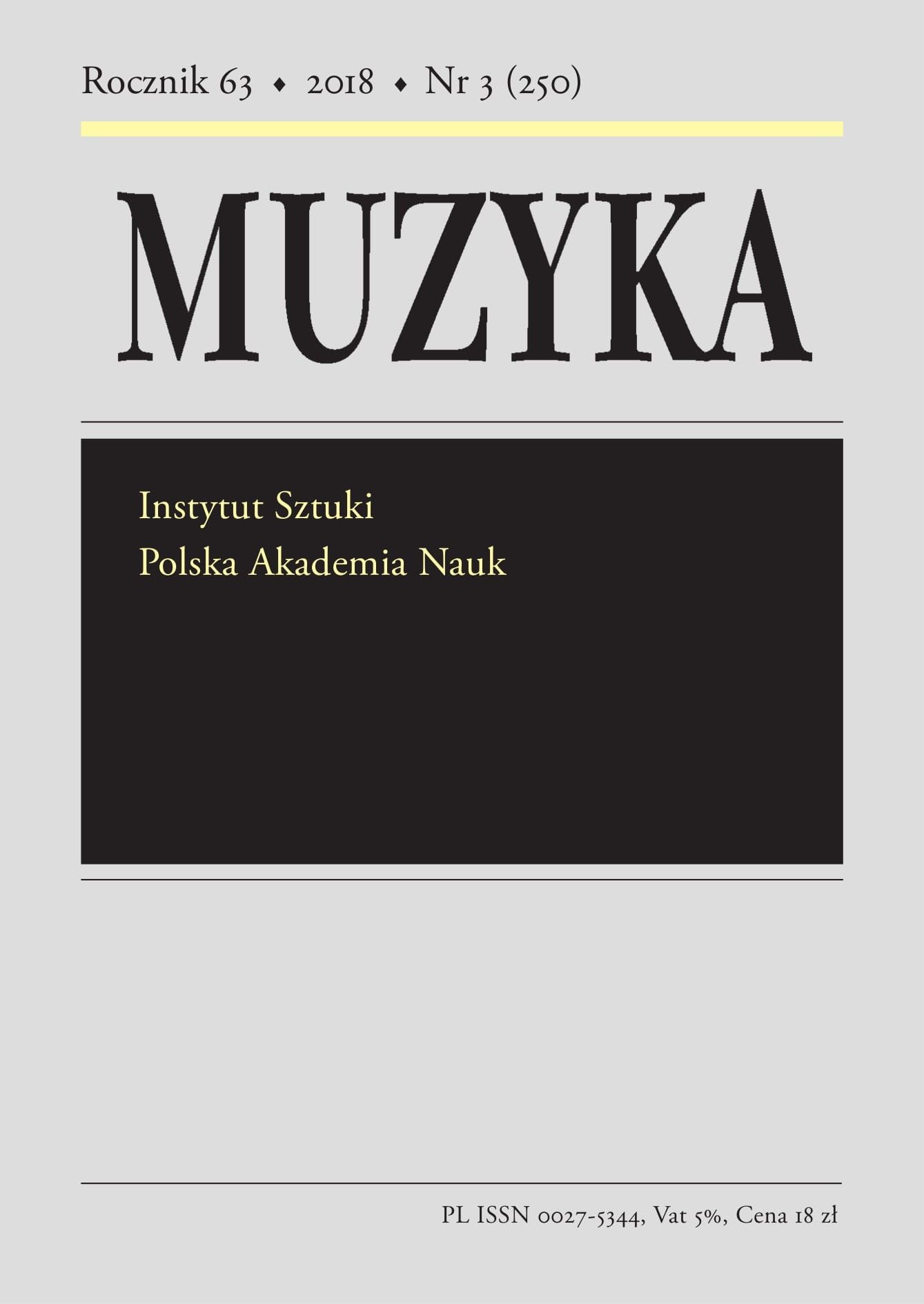Sancte Simon magno mundi: nowo zidentyfikowany motet Giovanniego Battisty Coccioli
Sancte Simon magno mundi: A newly identified motet by Giovanni Battista Cocciola
Author(s): Marcin SzelestSubject(s): Music
Published by: Instytut Sztuki Polskiej Akademii Nauk
Keywords: Giovanni Battista Cocciola; Sancte Simon magno mundi; Oliwa Tablature;motet;seventeenth-century music;
Summary/Abstract: The article deals with a two-choir motet for nine voice-parts with the incipit Sancte Simon magno mundi, preserved in the form of an organ intabulation included in the Oliwa (Braniewo) Tablature, started in 1619 (Vilnius, the Wróblewski Library of the Lithuanian Library of Sciences, F 15-284, f. 45v–46r), and attributed to a “Joannis Baptista”. In this source, and in similar sources from the northern territories of the First Polish Republic, such concise attributions referred only to composers well-known locally; also, in the case of two manuscripts, the names “Joannes Baptista” were used with reference to Giovanni Battista Cocciola, a composer based in Warmia and the Grand Duchy of Lithuania (years of activity confirmed in the sources: 1606–25). The author offers a summary of available knowledge about the composer’s artistic legacy, adding new information, including the previously unnoticed reference to the existence of another authorial print that has not survived (Motetti a cinque, ed. before 1621). The text of the motet Sancte Simon magno mundi has not been found. The text certainly refers to the apostle Simon the Zealot, who was not worshipped individually on a large scale, but was the patron saint of Szymon Rudnicki, Bishop of Warmia in the years 1605–21. Rudnicki maintained close contacts with the Jesuit College in Braniewo, where the source of the motet discussed here originated, and Cocciola was recorded as a musician in the bishop’s service in 1606. This remarkable coincidence lends credibility to the speculation that the motet Sancte Simon magno mundi could have been authored by Cocciola, who probably dedicated the composition to his patron. The motet belongs to a relatively small group of compositions in which the melody of the appeal from the Litany of Saints was used as an ostinato. The piece reveals a close affinity to Antonio Gualtieri’s motet Beatissimus Marcus for the same set of performers, published in an authorial print in 1604. In both compositions, the ostinato in the highest voice-part is repeated seven times without variations and at equal intervals. Gualtieri’s motet is also about a saint with the same name as the composer’s patron, Bishop Marco II Cornaro, to whom the collection was dedicated. It seems highly probable that Cocciola consciously modelled his composition on Gualtieri’s motet, while applying more sophisticated artistic devices: an ostinato performed at three different levels of the scale, an opening in imitative technique, greater variation of rhythm, the absence of repeated material and a more impressive culmination at the end.
Journal: Muzyka
- Issue Year: 63/2018
- Issue No: 3
- Page Range: 65-101
- Page Count: 37
- Language: Polish

